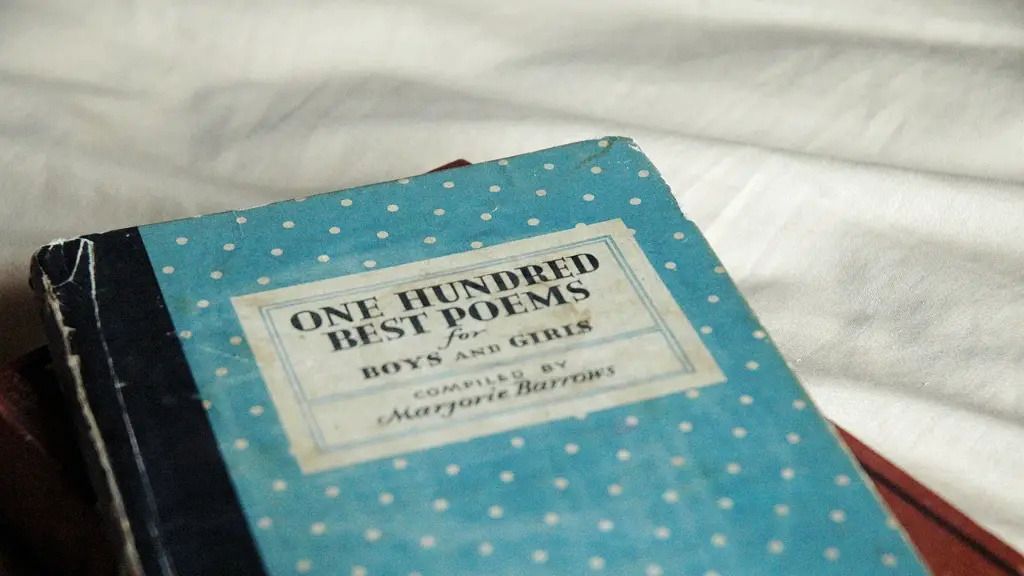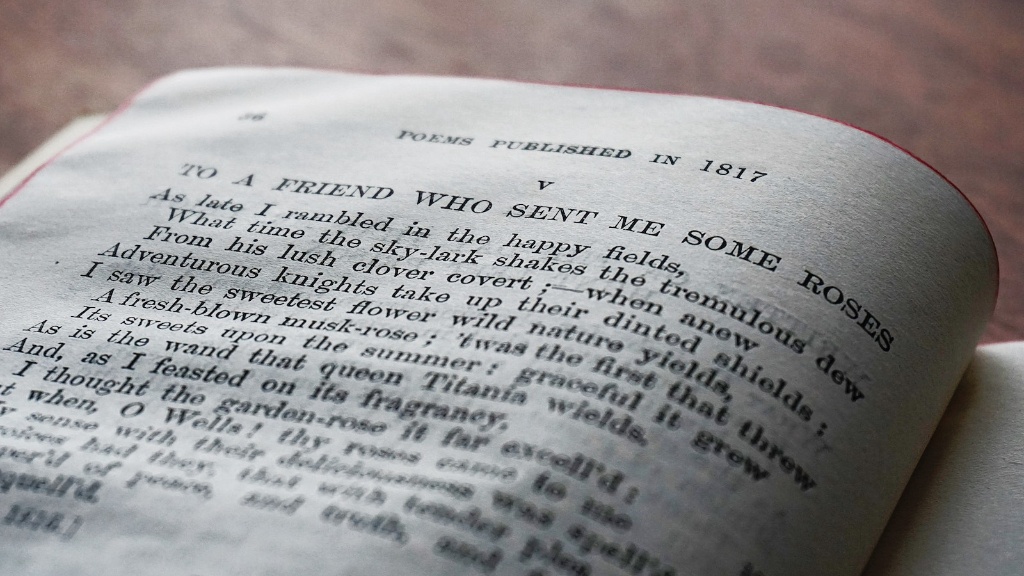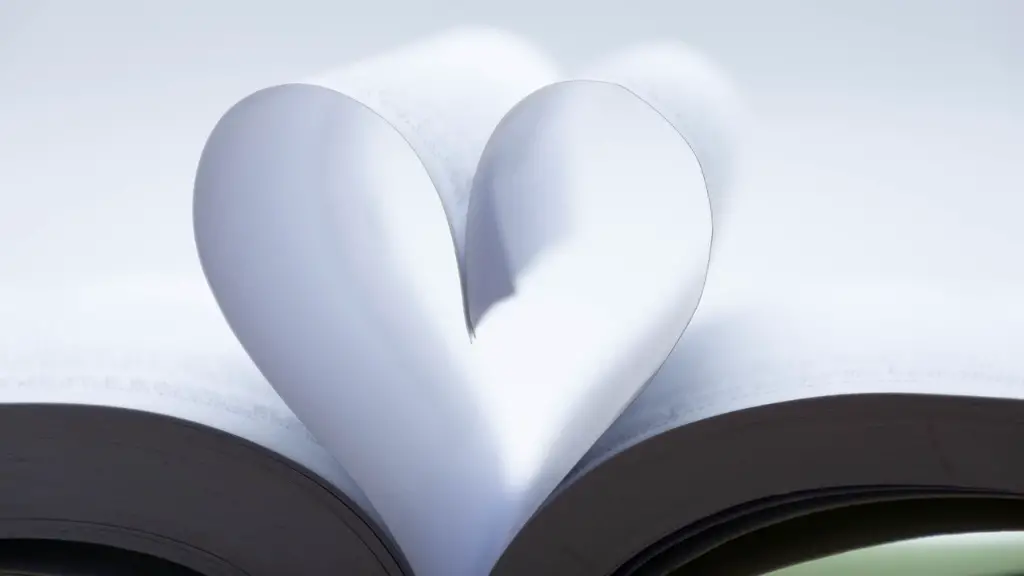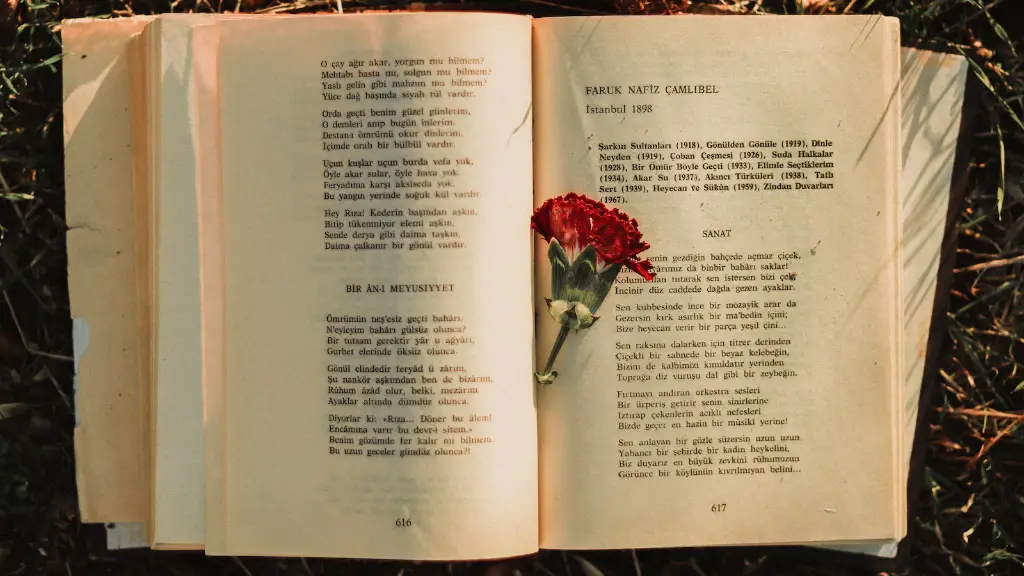Poetry is a unique genre of literature that has been enjoyed throughout the ages. It is complex and can be a challenge to teach to 3rd graders, who often lack foundational reading and rhyming skills. However, with the right teaching tools, 3rd grade educators can bring a stimulating world of literary expression to their classrooms.
Before getting started, it is important to create an environment where poetry can be experienced and enjoyed. Creating an atmosphere that blends playfulness with education can make a big difference in creating a successful learning environment. Incorporating music into the lessons can be a helpful tool that encourages 3rd graders to explore the beauty of poetry. Music has been used for centuries to get people to explore their emotions and it can help to make poetry more accessible for young minds.
Once such an environment has been created, teachers should consider introducing 3rd graders to both classic and modern poems. This will give students a better understanding of how poetry has evolved over time. Introducing students to classic works of poetry can be an interesting way to help them appreciate their literary heritage. Literature experts suggest providing both imagery and auditory elements when introducing poems. This can help 3rd graders put the literary pieces into context and understand the emotion behind the poems.
In order to help foster and grow a love of poetry in a 3rd grade classroom, assignments and assessments should also be part of the learning process. Asking students to respond to poetry in written and oral form can be helpful. Teachers can also get creative when assessing the poems, by encouraging students to write, recite, illustrate, and even act out the poem. This can help to build a better appreciation of the work and can help 3rd graders gain a more in-depth understanding of the poem.
Most importantly, in order to successfully teach poetry to 3rd-graders, it is essential that teachers not forget the importance of fun. Integrating activities with hands-on elements and games can be beneficial for captivating students’ attention and helping them to connect with the genre. This can also be a great way to help students find their creativity in unique and unexpected ways.
Using poetry as a language-learning tool
Poetry is not only a creative form of expression, but it can also be used as a tool to help 3rd graders learn a second language. Poetry is an excellent way to introduce language concepts and build vocabulary in a child-friendly way. This is because poetic form allows students to see how words can be used to create meaningful patterns, which is a great way to help students understand the basic mechanics of language.
When using poetry to help 3rd graders learn a foreign language, it is important to find age-appropriate poems that are interesting and fun for kids. Having students write and share their own poems in the new language can be a great way to help them understand and practice specific phrases and word forms. Exploring the use of poetic devices like metaphors, comparisons and similes can also be a great way to give a creative twist to language-learning.
In addition to helping with language-learning and language development, poetry can also be beneficial for teaching important life skills to 3rd graders. By analyzing metaphor, symbolism, and themes within poems, 3rd graders can not only gain an appreciation of literature but also become better imbued with a sense of cultural understanding and empathy.
Exploring different poetic forms
Exploring different poetic forms such as classic sonnets, haiku, and rap can be a great way to engage 3rd graders in the study of poetry. Each form is unique and exploring them in class can be a great way to learn about the different elements that make up poetic form. By discussing different literary elements that form each type of poem, students can gain a better understanding of how poetic form contributes to the poetry’s meaning and purpose.
For example, exploring haiku can be a great way to help students understand the power of brevity and the beauty of simplicity. Discussing the syllable structure of the poem can also help students appreciate how sound and rhythm can be used to create meaning and emotion. Exploring classic sonnets can help 3rd graders understand the power of structure and how poetic form can add complexity and depth to a work.
Introducing songs and rap to the classroom can also be an excellent way to bring the excitement of modern poetry to 3rd grade students. Discussing how a song or rap is constructed can be a great way to get students more engaged in the different elements of poetry. It can also help to deepen their appreciation and understanding of the use of figurative language, similes, and metaphors in creative works.
Bringing the world of poetry alive
Encouraging 3rd graders to bring their own life experiences to the classroom when reading and writing poetry can also be a great way to make the subject come alive for them. Asking students to draw, paint and act out the poems can be a great way to get students to creatively engage with and connect to the material. This can help students to feel part of the experience, which can result in a deeper appreciation of what it is trying to convey.
Writing poetry as a class can also be a great way to help 3rd graders to share their perspectives. This can help them to build empathy and gain a better understanding of their peers and the world around them. In addition, 3rd graders can also visit poetry slams and other poetry events, which can help to bring the material to life in unique and exciting ways.
Creating an atmosphere of creative expression
Exploring poetry with 3rd graders can be a great way to help them gain a better understanding of the world around them and to appreciate the beauty of literary expression. As in any artistic endeavor, it is important to create an atmosphere of openness and creativity when introducing 3rd graders to poetry. Surrounding them with a safe and supportive environment can help to make the classroom experience more enjoyable and stimulating for everyone involved.
In addition to creating an atmosphere of safety and respect, it is also important to ensure that 3rd graders understand that there is no one correct interpretation of a poem. Encouraging students to come up with their own interpretations and perspectives can help to encourage creativity and critical thinking. This can help to create a more dynamic and stimulating learning atmosphere for everyone involved.
Leading by example
At the end of the day, in order to successfully teach 3rd graders about poetry, the teacher must lead by example. By encouraging students to explore and discover the beauty of poetic expression and by demonstrating enthusiasm and appreciation for the literature, teachers can help their students to develop a deeper understanding and appreciation for the art form.
The teacher must also be open to different approaches and willing to take risks. Trying out different ways to bring poetry to the classroom and to build students’ skills and understanding can help to keep the subject matter fresh and engaging. And by providing an atmosphere of support and encouragement, teachers can help to foster an environment of creative expression where 3rd graders can awaken their inner poet.
Connecting with the wider community
Finally, it is important to remember that poetry is not just a subject that can be studied in a classroom, but an art form that should be embraced by the wider community. By attending poetry readings, visiting libraries, and creating collaborations with other schools and organizations, teachers can help to open up the world of poetry to the greater community. This can be especially beneficial for younger students who may not have the opportunity to explore the world of poetry on their own.
Overall, teaching poetry to 3rd graders can be a rewarding experience for both teachers and students alike. By providing a supportive and encouraging atmosphere and by introducing a range of classic and modern poems, teachers can help to bring the art of poetry to life for their students.
Encouraging kids to write their own poems
One of the best ways to help 3rd graders appreciate the beauty of poetry is to have them write their own pieces. This can be a great way to empower young writers and help them express themselves in a creative and meaningful way. Creating a safe environment where students can feel comfortable expressing their thoughts and feelings can help to foster a more effective learning atmosphere.
When encouraging 3rd graders to write their own poems, it is important to provide them with the right tools and guidance. Giving students age-appropriate prompts and topics can help to get the creative juices flowing. Talking them through the writing process and breaking the poem down into small tasks can also give 3rd graders a much easier time when crafting their pieces.
In addition, teachers should also introduce 3rd graders to the different forms of poetry and discuss how the use of different stylistic devices can help to create an interesting, and meaningful piece. After each of the writing tasks have been completed, students should be given the opportunity to read their poetry aloud. This can help them gain a better appreciation of their work and can help to build their confidence when it comes to public speaking.
Exploring literature from other cultures and times
Exploring different periods in literature and discovering the works of authors and poets from around the world can help give 3rd graders a greater appreciation of the beauty and diversity of the world of poetry. Taking time to discuss the historical and cultural contexts of the works can be an excellent way to help 3rd graders better understand the different themes, characters and forms of poetry.
Encouraging 3rd graders to compare and contrast classical works of poetry with modern pieces can be an interesting exercise. This can help students to gain an understanding of how various forms of literature have evolved and to recognize the beauty and complexity of different works.
For example, discussing how classic works of poetry like William Wordsworth’s “Composed upon Westminster Bridge” can be compared to modern works like Ashley Gantt’s “Birds on the Line” can help to give 3rd graders a greater appreciation of how literature can reflect the culture and times of the period.
Using different technologies to explore poetry
In the modern era, there are many different technologies available to help bring the world of poetry to life for 3rd graders. Utilizing programs such as audio-editing software can help make the process of creating and editing poems much more accessible. Exploring the use of technology can also be a great way to get 3rd graders more interested and engaged in the material.
Using programs such as soundboards and video conferencing can also be a great way to help teach poetry to 3rd graders. The use of such technologies can help to create a more immersive experience, which can help to make the subject matter more interesting and engaging.
Finally, teachers should also consider exploring the use of digital poetry libraries, which can be a great way to expose students to a variety of works from both contemporary and classical poets. Exposing 3rd graders to such an amazing array of work can be an excellent way to foster an appreciation and love of literature in the classroom.





